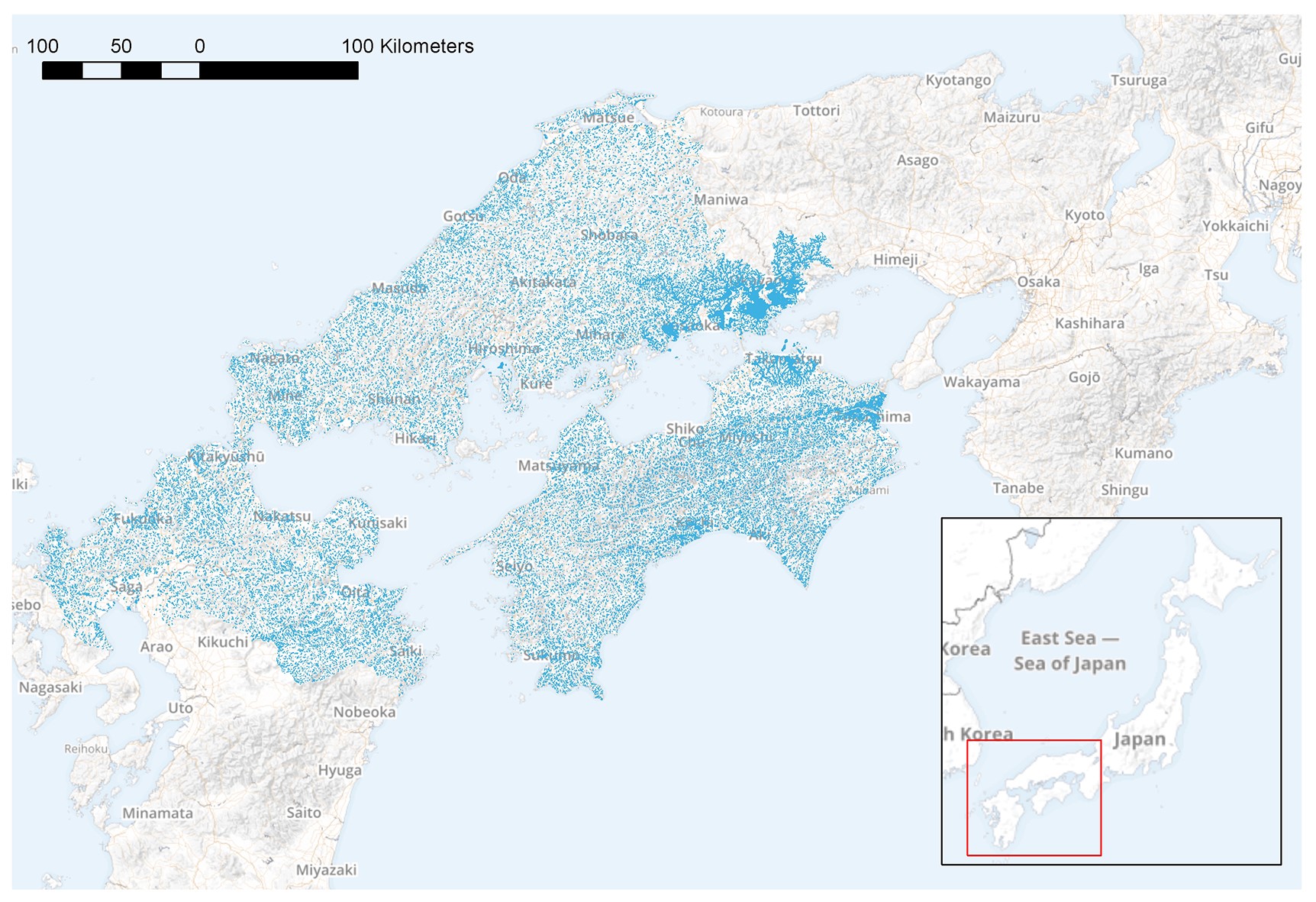South western prefectures of Japan have been severely impacted by flooding and associated landslides following Tropical Storm Prapiroon’s passage over the country. The eye of Prapiroon passed to the north east of Hiroshima prefecture on Wednesday 4 July.
However, high convective wind shear combined with cool sea surface temperatures caused the tail of the storm to elongate, stalling for a number of days over south western prefectures of Japan, resulting in persistent heavy rainfall. Kobe received 215mm of rainfall between Thursday 5 July and Sunday 8 July. 
Following the band of persistent rain, intense convective activity in the region caused further torrential, more intense rain, resulting in flash flooding and landslides on the already saturated ground. Uwajima, in Ehime prefecture, experienced 364mm of rainfall in a two hour period on Sunday morning, which amounts to almost 1.5 times the July average for the area.
As of 17.00 GMT on Monday 9 July, 114 people are reported to have lost their lives. The majority of casualties are in Hiroshima prefecture, largely in more rural areas. Multiple casualties have also been reported in Ehime and Okayama, with further casualties in Yamaguchi, Kyoto, Gifu, Shiga, Hyogo, Kochi and Fukuoka prefectures. It is not possible to separate flood and landslide casualties at present.
It is estimated that the event has affected 2 million people, with more than 30,000 people spending Sunday night in emergency evacuation centres and a further 1.7 million facing orders or advice to stay away from their homes.
Economic impacts have also been experienced by several large manufacturing companies based in the region, with Panasonic suspending production at one plant due to being flooded and several others, such as Mazda and Daihatsu, ceasing production as supply routes were blocked by flooding and landslides.
The severity of this event is likely due to a combination of persistent rainfall provided by the disintegration and stalling of Tropical Storm Prapiroon and intense convective storms which have acted as triggers for landslides, the risk of which is heightened due to very wet antecedent conditions.
As mainland Japan responds to this significant event, Japan’s Ryukyu islands to the south brace for the impact of Super Typhoon Maria, which could then impact Taiwan and areas of Fujian and Zhejiang provinces in South China.
Get in touch with our event response team for more information and to access our flood extents.